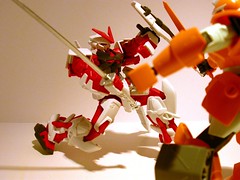In recent years we see many manufactures attempt to come up with the ultimate (“Killer”) product for the inevitable “digital convergence” age.
A few years ago we saw Handspring with their PDA/Phone, which was a case where a company tried to add features and capabilities of a phone into a PDA. In 2003, Palm Inc. either realized they could not do as well or just wanted to be in control, bought Handspring and now Palm combined both companies products under the moniker “Treo”.
Before Handspring Nokia and the alike (Motorola) tried to do what Handspring did, but their own area of expertise. Nokia had their Communicator products, which they still “insist” on selling an updated version of, is a mobile phone with a physical size dating back to the 80s when most people didn’t mind carrying a small paperback size mobile phone.
Both of these manufactures [Nokia and Handspring] wet their feet in “digital convergence” but did not follow the design principle of most successful manufactures who create great products. That is to “step back and look at the problem at hand” before designing.
Later the term “Smartphone” was coined with devices running different mobile OSes (Operating Systems) from competing and non-compatible manufactures: Microsoft (Windows Mobile OS), Symbian (Symbian OS) and Linux. The Symbian OS gained the most acceptance by the mobile phone handset manufactures: Nokia and Sony Ericsson, with Motorola going with Microsoft. Which Motorola later found out the hard way that Microsoft is never the right company to bet on when you want ease of use and good design.
The success of the Symbian OS is again the way in which Symbian followed the simple principle of “stepping back and looking at the problem at hand”. They took the functionalities of a mobile phone and a PDA (in particular the PIM, Personal Information Management) and then come up with the best way to integrate them into a cohesive and integrated platform.
Even with a well designed OS and platform it still requires the handset manufacture to execute it correctly and Nokia again fell short with their device, fortunately Sony Ericsson came with a successful execution in the form of their Smartphone P800 in 2002, and has since enhanced it again and again up to just last year.
Now one of Sony Ericsson’s two partner companies is trying again, after failing, to take back control of the mobile music market from the likes of Apple Computers Inc., Sony has released yet another online music store to allow its PSP to download and listen to music on their PSP game console. I do not see success in Sony’s latest attempts since I do share the believes that gamers who purchase the PSP console will likely take the time to download music onto the device or to listen to songs while they play games on the PSP console.
Another manufacture who recently joins the many who attempt to exploit their strength to move into the age of Digital Convergence is Olympus, the company who has been most successful in the digital camera market. They released a product called “m:robe MR-500i”, which is a device with a 20GB hard drive that plays MP3 and WMA music, but with Olympus’ background they also included a 1.2 Megapixel digital camera and a 3.7″ colour (VGA) LCD display.
All in all with so many companies trying their hands in Digital Convergence, making the mistakes as they do, eventually they will figure this out and the ultimate benefactor will be the end users of these devices. Until then you and I will have to suffer through these mediocre devices.
Although I for one will not give much time and most importantly my money to any that I do not feel have a good enough design or user interface.
So buyers beware!



